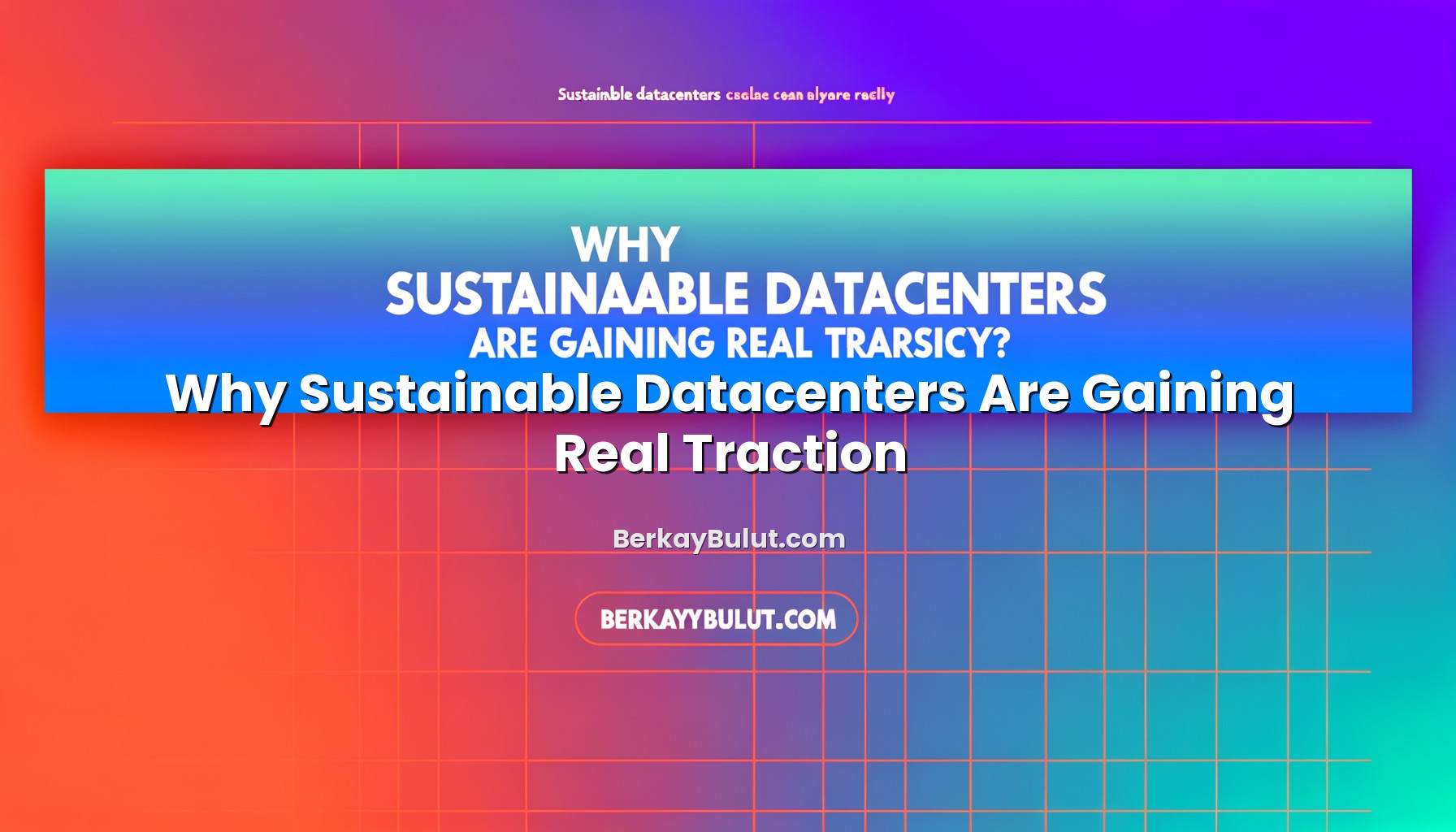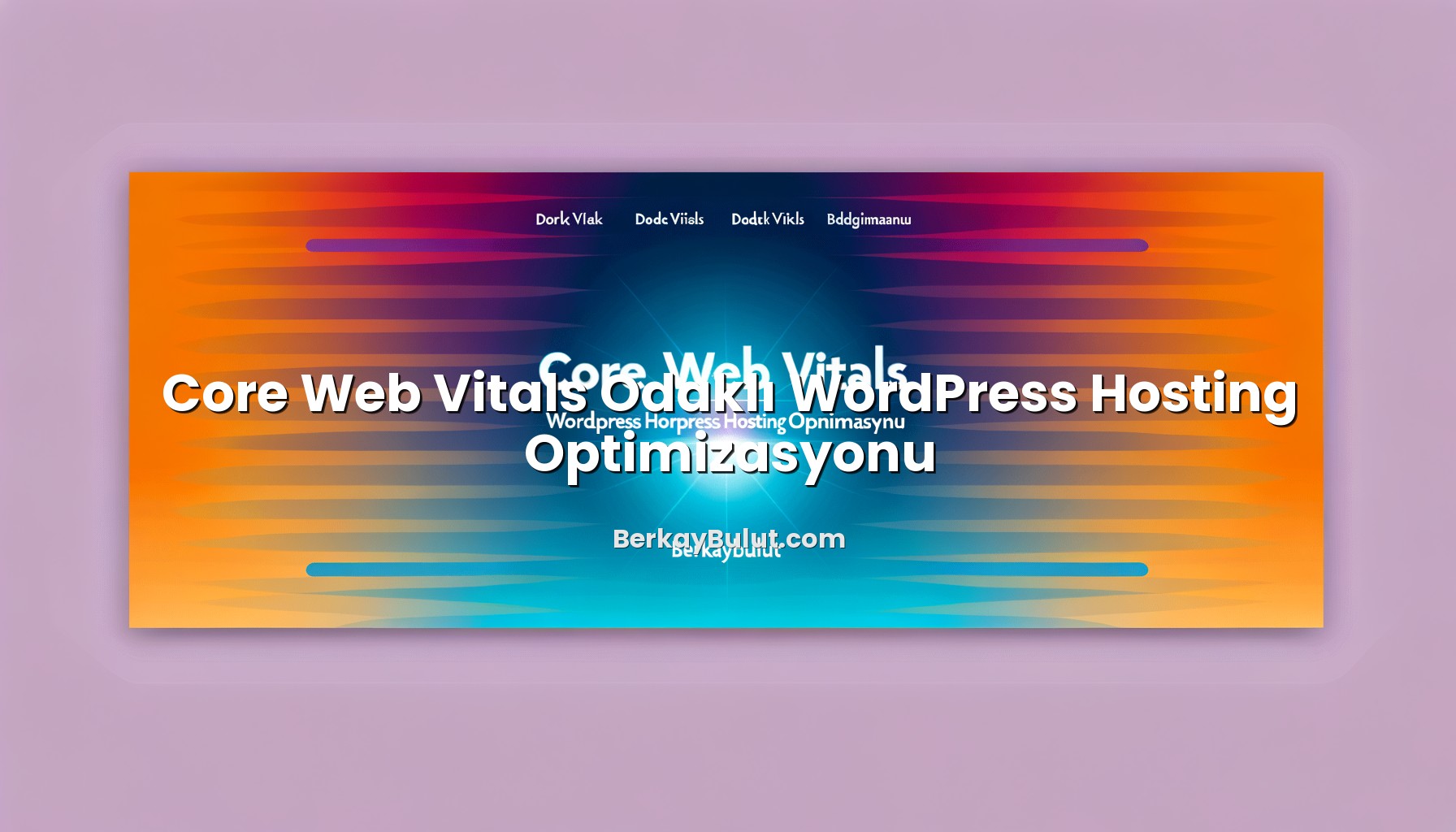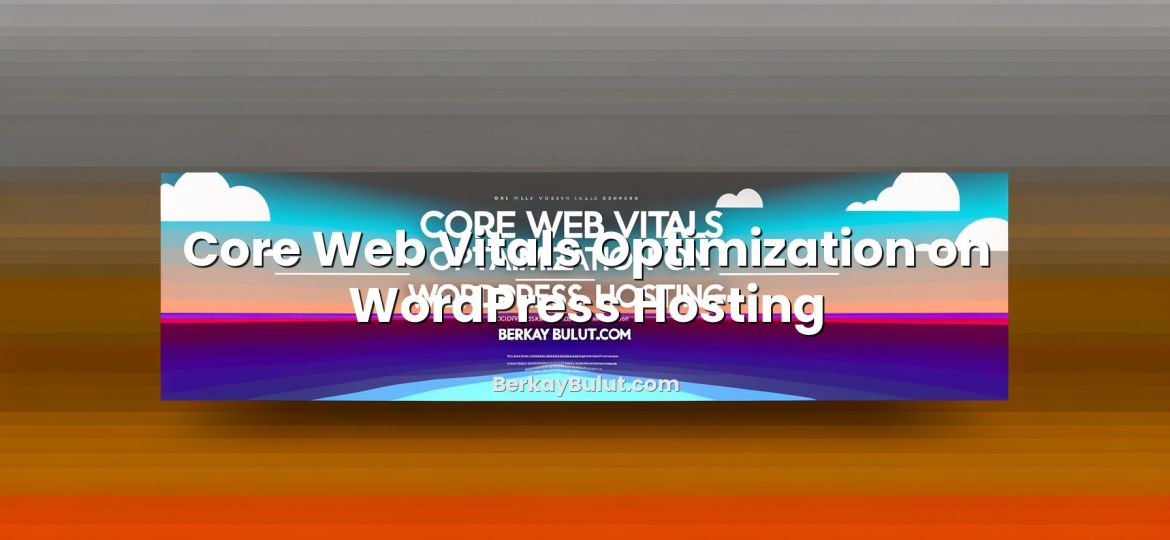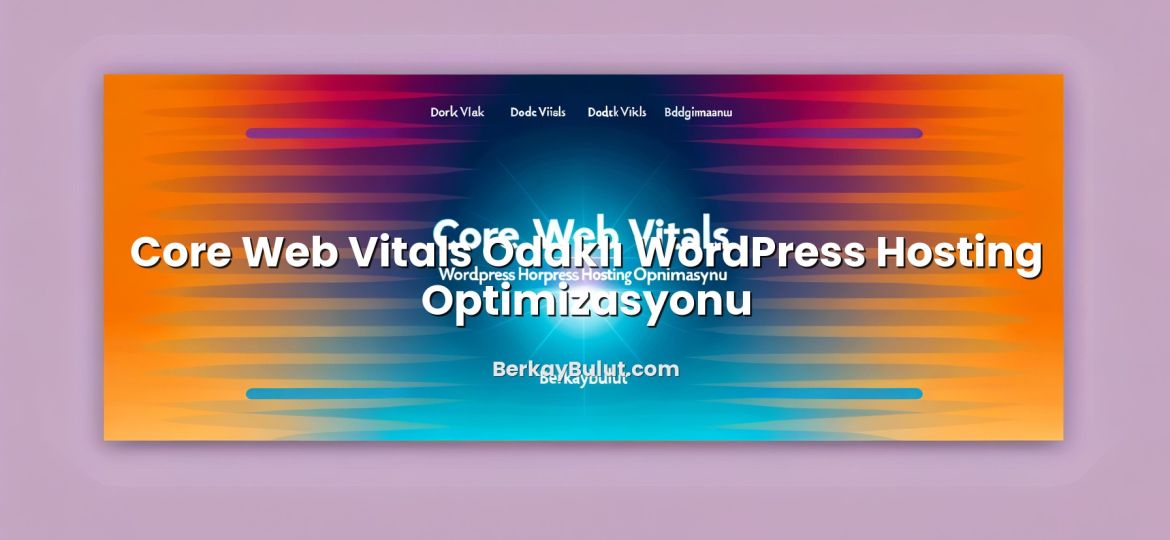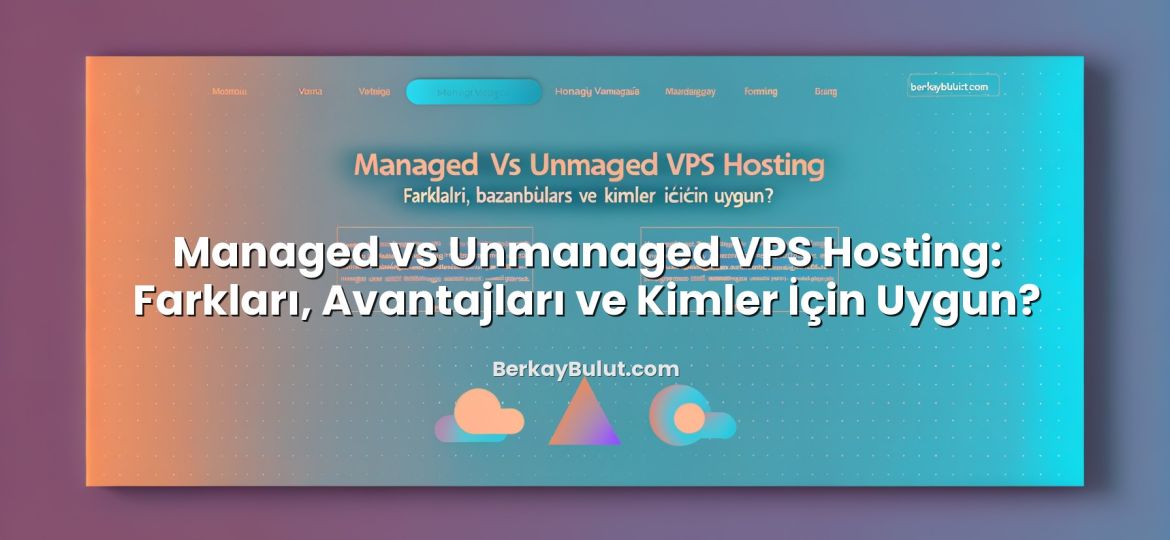Datacenters have quietly become one of the largest energy consumers in modern infrastructure. Every architecture review, hardware refresh, or capacity planning session I join in recent years eventually comes back to the same questions: How much power will this need? and how can we make it more efficient? Sustainable datacenters are no longer a niche topic for environmentally focused companies; they are rapidly becoming a default expectation in modern IT strategies. Rising energy prices, stricter regulations, ESG reporting requirements and customer pressure are forcing executives, DevOps teams and system administrators to rethink how they design and operate infrastructure. In this article, I will walk through why sustainable datacenters are gaining so much traction, what actually makes a datacenter sustainable beyond marketing buzzwords, and how you can align your hosting, server choices and day-to-day operations with greener, more efficient practices—without sacrificing performance or reliability.
Why Sustainable Datacenters Are Suddenly Everywhere
From a distance, the interest in sustainable datacenters might look like a branding exercise. Up close, the drivers are much more concrete. When you operate real workloads—databases, e‑commerce platforms, large WordPress networks, analytics clusters—you quickly see how power and cooling dominate operating costs.
Three main forces are pushing sustainable datacenters to the foreground:
- Cost pressure: Energy prices are volatile and trending upward in many regions. For large facilities, even a small percentage of efficiency improvement translates into six- or seven-figure annual savings.
- Regulation and compliance: Governments are introducing stricter rules around energy efficiency, emissions and reporting. Operators that do not optimize will face penalties, higher taxes or permitting issues.
- Customer expectations: Companies are now audited not just on uptime and security, but also on their environmental impact. Sustainability questions are standard in RFPs and vendor assessments.
I covered the business and environmental side in more depth in my earlier article on why sustainable data centers are attracting so much interest. Here, we will focus more on the technical levers you can actually pull as an architect, admin or developer.
Key Metrics: How We Actually Measure Sustainability
Before talking about technologies, we need to clarify how sustainability is measured. In real-world datacenter projects, we do not talk about “green” in abstract terms; we talk about specific metrics that are tracked, optimized and reported.
PUE – Power Usage Effectiveness
Power Usage Effectiveness (PUE) is the most common metric. It is defined as:
PUE = Total facility power consumption / IT equipment power consumption
If a datacenter consumes 1.6 MW in total and 1 MW of that is used by IT equipment (servers, storage, network), then PUE = 1.6. A PUE of 1.0 would mean every watt goes directly to IT load, with no overhead—practically impossible, but a useful ideal.
- PUE < 1.3 is considered very efficient.
- PUE ≈ 1.5–1.8 is typical for decent modern sites.
- PUE > 2.0 usually indicates serious optimization potential.
When you evaluate providers or colocation facilities, ask for historical PUE values, not just the design target. Sustainable datacenters track PUE continuously, not once per year for the brochure.
WUE – Water Usage Effectiveness
Water Usage Effectiveness (WUE) measures how much water is consumed for cooling IT load:
WUE = Annual water usage (liters) / IT energy (kWh)
Some highly efficient cooling strategies, such as certain evaporative systems, can unintentionally increase water consumption. A datacenter may look good on energy metrics but bad on water usage. Sustainable design means balancing both.
CUE – Carbon Usage Effectiveness
Carbon Usage Effectiveness (CUE) connects energy consumption with the carbon intensity of the power source:
CUE = Total CO₂ emissions (kgCO₂) / IT energy (kWh)
Here, the energy mix matters a lot. A datacenter powered largely by renewables can have a much lower CUE even if its PUE is similar to another site. This is why sustainable operators care not just about how much power they use, but also where that power comes from.
In my experience, serious operators track PUE, WUE and CUE together. When you see these metrics on a dashboard and tied into capacity planning, you know sustainability is built into the operation, not just marketing slides.
Core Design Principles of a Sustainable Datacenter
Efficiency starts at design time. If the building, electrical architecture and cooling concept are wrong, no amount of software tuning will magically fix the fundamentals. Over the years, I have seen some recurring design patterns in genuinely sustainable datacenters.
Smart Site Selection and Building Design
- Climate-aware location: Colder climates allow extensive use of free cooling, where outside air or naturally cool water can be used instead of energy-hungry chillers.
- Building orientation and insulation: Proper insulation, shading and airflow planning reduce both heating and cooling loads.
- Modular construction: Modular halls and phased deployment avoid oversizing infrastructure years before it is actually needed.
If you are interested in how environmental conditions affect datacenter design, you may also like my article on environmental impacts and green solutions in datacenters, where I focus specifically on climate and local constraints.
Efficient Power Infrastructure
Sustainable datacenters invest heavily in high-efficiency power delivery:
- High-efficiency UPS systems: Modern UPS units can reach 97–99% efficiency, especially in eco or line-interactive modes.
- Optimized power distribution: Shorter power paths, optimized transformer design and right-sized PDUs reduce conversion losses.
- DC power or fewer conversions: Some advanced facilities minimize AC–DC–AC conversions to reduce waste.
From an operator perspective, this means fewer watts lost between the grid and your servers. The result: lower PUE and lower bills without touching application code.
Modern Cooling Strategies
Cooling is often the biggest lever. Traditional CRAC units pushing cold air under raised floors are giving way to smarter systems:
- Hot/cold aisle containment: Physical separation of hot and cold air streams to prevent mixing and significantly improve cooling efficiency.
- Free cooling and economizers: Using outside air, adiabatic systems or water-side economizers when climate allows.
- Liquid cooling: For high-density racks and GPU clusters, direct-to-chip liquid cooling can dramatically reduce energy use compared to forcing huge air volumes through dense servers.
In a design workshop for a high-density analytics cluster, we managed to reduce projected cooling energy by over 30% simply by moving from open aisles to full hot-aisle containment and slightly raising supply air temperature within ASHRAE limits. No extra hardware, just better airflow engineering.
Server and Storage Efficiency
Even in a well-designed building, inefficient IT hardware can kill your energy profile. Sustainable datacenters encourage or enforce:
- Modern CPU generations with better performance per watt.
- SSD-based storage instead of heavy spinning disks where latency and performance justify it.
- High consolidation ratios via virtualization and containers to avoid underutilized bare-metal servers.
For teams running VPS or cloud-style environments, it is worth revisiting your consolidation strategy. If you are curious about how different architectures impact efficiency, you can check my guide comparing VPS, cloud and dedicated servers from an architecture perspective.
Operational Strategies: Sustainability in Day-to-Day Management
Design is only half the story. The most efficient building can still waste enormous amounts of energy if operated poorly. As someone who spends a lot of time on monitoring dashboards, capacity reports and incident reviews, I have seen how much difference good operational discipline can make.
Right-Sizing and Capacity Planning
Oversizing is one of the most common sustainability problems. Teams plan for theoretical peak load plus a huge safety margin, deploy infrastructure years too early, and then run at 10–20% utilization. This is wasteful in several ways:
- Unused servers still draw idle power.
- Cooling must be designed for the full footprint from day one.
- Capital is locked into hardware that might be outdated before fully utilized.
Modern capacity planning uses:
- Historical data: Real traffic and load patterns, not guesswork.
- Seasonal analysis: Understanding business peaks like campaigns, sales and regional events.
- Incremental scaling: Adding capacity in smaller, more frequent steps instead of giant, rare upgrades.
If you are running your own VPS or virtualized environment, the same principle applies at a smaller scale: consolidate low-utilization instances, retire forgotten test servers and regularly audit resource usage. My VPS management guide on SSH, updates and resource monitoring shows practical ways to track and act on these metrics.
Automation, Orchestration and Scheduling
Automation is not only about convenience; it is one of the most powerful sustainability tools:
- Automatic scaling: Scale services up and down based on load rather than running peak-capacity resources 24/7.
- Intelligent scheduling: Move non-urgent batch jobs to off-peak times or to regions with lower carbon intensity at that moment.
- Policy-based shutdown: Automatically power down dev, test and lab environments outside working hours where possible.
In one environment I managed, simply implementing automatic shutdown of unused staging environments after 24 hours reduced monthly compute energy by double-digit percentages, with zero impact on developer productivity.
Monitoring the Right Metrics
Typical monitoring setups focus on CPU, RAM, disk, network and uptime. Sustainable datacenter operations extend this with:
- Per-rack and per-row power consumption.
- Inlet and outlet temperatures at rack level.
- Real-time PUE and cooling efficiency indicators.
When you connect these metrics with your application landscape—knowing which cluster sits in which rack, which service is responsible for which load—you can make informed decisions on workload placement, consolidation and optimization.
AI-assisted optimization is also entering daily operations. For a deeper dive into how AI affects datacenter management, see my article on artificial intelligence in datacenters.
Choosing Sustainable Hosting and Colocation Partners
Most teams do not build their own datacenters. Instead, they choose hosting providers, VPS platforms or colocation facilities. This is where sustainability requirements often get lost between marketing and actual engineering. Here are concrete questions I use when evaluating a provider from a sustainability perspective.
Questions to Ask Potential Providers
- What is your historical PUE, WUE and CUE? Ask for real numbers over the past 12–24 months, not just design targets.
- What is your energy mix? How much comes from renewables? Are there long-term contracts for green energy?
- How do you handle heat reuse? Some facilities reuse waste heat for district heating or nearby buildings.
- What is your hardware lifecycle policy? How are old servers and batteries recycled or repurposed?
You do not need to be an environmental expert; you just need to consistently ask these questions and compare answers across providers. The difference in transparency is often very revealing.
Where DCHost Fits Into the Picture
If you want to align your hosting choices with sustainable practices, working with providers that actually care about infrastructure efficiency is essential. For example, DCHost focuses on modern, energy‑efficient hardware, high consolidation via virtualization and well-managed datacenter locations with strong power and cooling efficiency. Instead of chasing every trend, the emphasis is on stable, optimized environments where each watt delivers as much useful compute as possible.
When I discuss architecture with teams who host workloads on DCHost, we often combine sustainable infrastructure with application-level optimizations: smarter caching, efficient database settings and CDN usage. If you want to explore the performance side of this equation, my guide on VPS optimization for WordPress with MySQL, PHP and caching is a good starting point.
Integrating Sustainability into Your Hosting Strategy
Sustainability should be part of your regular hosting evaluation checklist, alongside uptime SLAs, support quality and security. For example, when you review potential providers:
- Include PUE and renewable energy usage as explicit evaluation criteria.
- Ask about datacenter certifications and third-party audits.
- Consider geographical location not only for latency and SEO but also for climate and energy mix.
On that last point, I recommend reading my guide on choosing datacenter locations and server regions. While it focuses on performance and SEO, the same factors—latency, user location, regional infrastructure—intersect strongly with sustainability decisions.
The Road Ahead: Regulations, Edge and Practical Next Steps
Sustainable datacenters are not a temporary trend; they are becoming the default way infrastructure is built. Several developments are accelerating this shift:
- Stricter regulations: More regions are introducing efficiency standards, reporting requirements and caps on datacenter energy growth.
- Edge computing: Pushing workloads closer to users can reduce network overhead and latency, but also demands many smaller, efficient edge sites rather than a few giant hubs.
- Hardware specialization: GPUs, TPUs and accelerators are creating much denser racks, where traditional cooling is insufficient and efficient liquid cooling becomes mandatory.
In my article on the future of datacenters and upcoming trends, I dig deeper into how these forces reshape architecture. The common thread is clear: efficiency and sustainability are not side topics; they are core design constraints.
Practical Steps You Can Take Today
You do not need to own a datacenter to contribute to more sustainable infrastructure. As a developer, admin, architect or site owner, you can:
- Clean up unused resources: Remove abandoned VMs, test environments and old snapshots.
- Improve application efficiency: Implement caching, optimize queries and compress assets to reduce CPU and bandwidth use.
- Choose efficient locations: Place workloads closer to users and in regions with cleaner energy where feasible.
- Ask your provider hard questions: Request PUE, energy mix and sustainability reports. Providers respond when customers push.
Over time, many small, practical steps at the application and hosting level combine into a significant impact.
Conclusion: Sustainability as a Core Infrastructure Skill
Sustainable datacenters are gaining traction because they solve real problems: they reduce operating costs, lower regulatory risk and align infrastructure with the environmental expectations of users, employees and investors. Behind the buzzwords are very concrete levers—PUE, WUE, CUE, efficient power and cooling design, modern hardware, smart capacity planning and automation. The good news is that you do not need to be a building engineer to play a role. By choosing efficient hosting platforms like DCHost, asking the right questions about datacenter design, and optimizing your own workloads, you directly influence how much energy your digital services consume.
If you are planning a new project, migrating from legacy infrastructure or simply reviewing your current environment, take the opportunity to put sustainability on the agenda alongside uptime, performance and security. Start with measurable metrics, challenge your assumptions about capacity and work with partners who treat efficiency as a first-class goal. The organizations that master sustainable infrastructure today will not only help the environment—they will also be better positioned for the economic and regulatory realities of the next decade.


